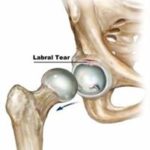Turtle Neck Syndrome: Symptoms and Exercises to Relieve Pain
Introduction: What Is Turtle Neck Syndrome?
You could be familiar with Turtle Neck Syndrome, a painful condition which happens when you spend hours slumped over your computer, tablet, or phone. It’s the younger brother’s illness that appears to have coincided with our increasing reliance on technology. Your neck is vulnerable to strain whether you spend the day at a desk or studying through social media, and this stress may eventually result in relentless stiffness, pain, and discomfort. Rest easy though; there are strategies that can reduce the pain and prevent it from dominating your life.
We’ll examine the symptoms and indications of Turtle Neck Syndrome in this post and offer easy yet efficient ways to reduce the pain. Consequently, keep still if you’ve experienced a recurrent neck hurt! You might be shocked at how simple the solution is.
What Are the Symptoms of Turtle Neck Syndrome?
Though it’s simple to ignore headaches as a usual part of life, Turtle Neck Syndrome is more than just random aching. It’s time to take notice and modify your lifestyle and posture if you’re exhibiting any of the signs that follow:
- Neck Pain & Stiffness
A throbbing or sharp pain in the neck is one of the tell-tale signs of Turtle Neck Syndrome. The pain can get worse with activity or after sitting in one position for too long. You might notice it especially after a long day of working at your desk or scrolling through your phone.
- Reduced Range of Motion
You may find that it’s harder to move your neck freely. Turning your head from side to side might feel stiff or restricted, and simple movements can become uncomfortable.
- Frequent Tension Headaches
Pain that starts in the neck often radiates upward, causing headaches. These can range from mild to severe, often triggered by poor posture or long periods of screen time.
- Shoulder & Upper Back Pain
- Nerve Pain
As the cervical spine becomes misaligned, nerves can get pinched, causing tingling or numbness in your arms or hands. This is a sign that the condition is affecting your nerves and needs to be addressed.
How to Relieve: Simple Exercises to Help
Good news! You cannot afford to put forward the pain indefinitely. You can keep your neck in better condition and alleviate the symptoms of Turtle Neck Syndrome with a little work and perseverance.These efficient exercises can be practiced right away:
- Chin Tucks
Sit or stand upright with your shoulders relaxed.
Bring your chin gently up to your chest.
Hold for five seconds, then let go gradually.
10–15 repetitions are required.
This exercise helps you realign your head with your spine and strengthens the muscles that support your neck.
- Neck Rolls
Straighten your back whether walking or resting.
Make a slow, clockwise and anticlockwise circle with your neck.
Roll between five and ten times in each direction without exerting yourself.
Neck rolls are an effective method to boost neck strength flexibility and decrease tension.
- Shoulder Blade Squeezes
Arms at your sides, sit or stand erect.
Pull your shoulder blades towards your spine by pressing them together.
During five seconds of holding, let go.
Do this 10–12 rounds.
By strengthening the upper back and improving posture, this exercise lowers the stress on your neck.
- Wall Angels
Place your feet about 6 inches from a wall and stand with your back to it.
Put your head, upper back, and lower back against the wall.
With your elbows bent, raise your arms into a “W” shape.
Raise your arms slowly in a “Y” shape, then bring them back down to a “W.”
10–12 repetitions should be done.
By focussing on your shoulders and upper back, wall angels can help you maintain better posture and relieve pressure on your neck.
- Chest Openers
Hold your hands behind your back while standing or sitting upright.
Open up your chest by slowly raising your hands higher.
Hold for 10 to 15 seconds, then let go.
3–4 times over.
This stretch improves your body alignment by addressing the rounded shoulder posture that is sometimes brought on by too much screen usage.
Developing Habits to Avoid Turtle Neck Syndrome
Exercise can undoubtedly aid with pain relief, but prevention is essential. In order to keep Turtle Neck Syndrome from getting worse, you can adopt the following routine responsibilities:
- Check Your Posture
Always remind yourself to sit up straight. Don’t slouch; instead, keep your shoulders back. To prevent stressing your neck, make sure your ears and shoulders line up.
- Take Frequent Breaks
Long-term screen staring is a primary contributor to neck strain. Take a 20-second break every 20 minutes and focus on something 20 feet away to try to adhere to the 20-20-20 rule. Stretch your shoulders, back, and neck during this time.
- Adjust Your Workstation
Make sure your screen is at eye level to prevent you from craning your neck forward. Invest in an ergonomic chair that supports your spine’s natural curve, and keep your arms at a 90-degree angle while typing.
Long-term screen staring is a primary contributor to neck strain. Take a 20-second break every 20 minutes and focus on something 20 feet away to try to adhere to the 20-20-20 rule. Stretch your shoulders, back, and neck during this time.
- Stay Active
The muscles supporting your neck may become weaker if you lead a sedentary lifestyle. To increase your flexibility and muscle strength, schedule frequent exercise.
- Mind Your Phone Use
Keep your phone at eye level when texting or browsing. Avoid looking down for prolonged periods to prevent neck strain.
FAQ: Turtle Neck Syndrome
Q1: Can Turtle Neck Syndrome be cured?
A1: While Turtle Neck Syndrome may not have a “quick fix,” it can be managed with proper posture, regular exercises, and lifestyle changes. If the pain persists, it’s a good idea to consult a healthcare provider.
Q2: How long will it take to relieve Turtle Neck Syndrome pain?
A2: The relief time varies from person to person. With regular exercise and posture improvements, you may start to feel better within a few days to a week.
Q3: Is Turtle Neck Syndrome a serious condition?
A3: If left untreated, Turtle Neck Syndrome can lead to chronic neck pain, headaches, and even nerve compression. However, with early intervention and proper care, it’s manageable.
Q4: Can I still use my phone if I have Turtle Neck Syndrome?
A4: Yes, but try to avoid looking down at your phone for long periods. Hold your phone at eye level and take regular breaks to stretch and rest your neck.
Final Notes: Controlling Turtle Neck Syndrome
At first, Turtle Neck Syndrome might seem like a minor issue, but it can eventually cause persistent pain and discomfort. Fortunately, you may lessen the pain and keep it from getting worse with the correct exercise sessions and posture modifications. Therefore, keep these neck-healthy workouts and advice in mind next time you find yourself bending over your computer or phone.











